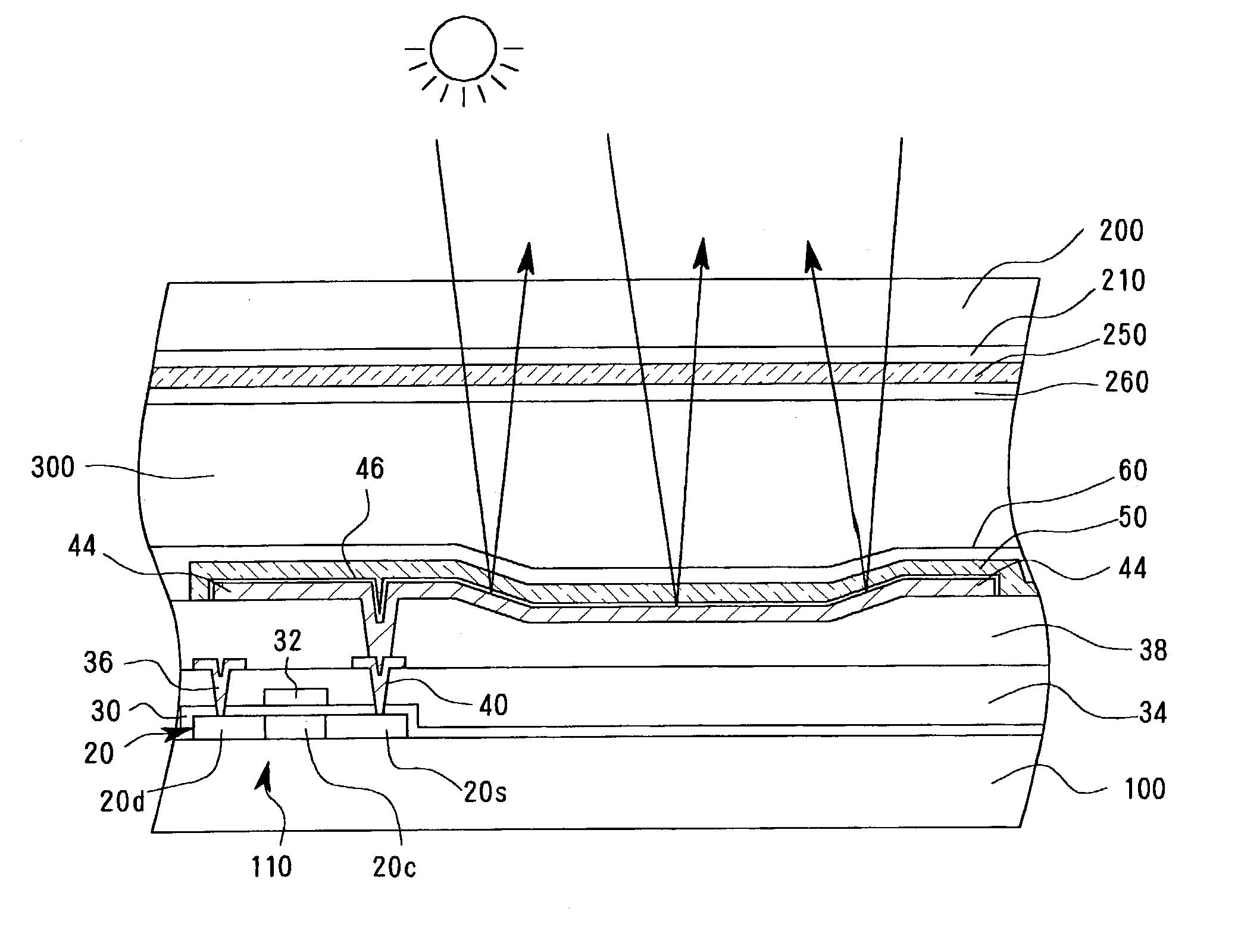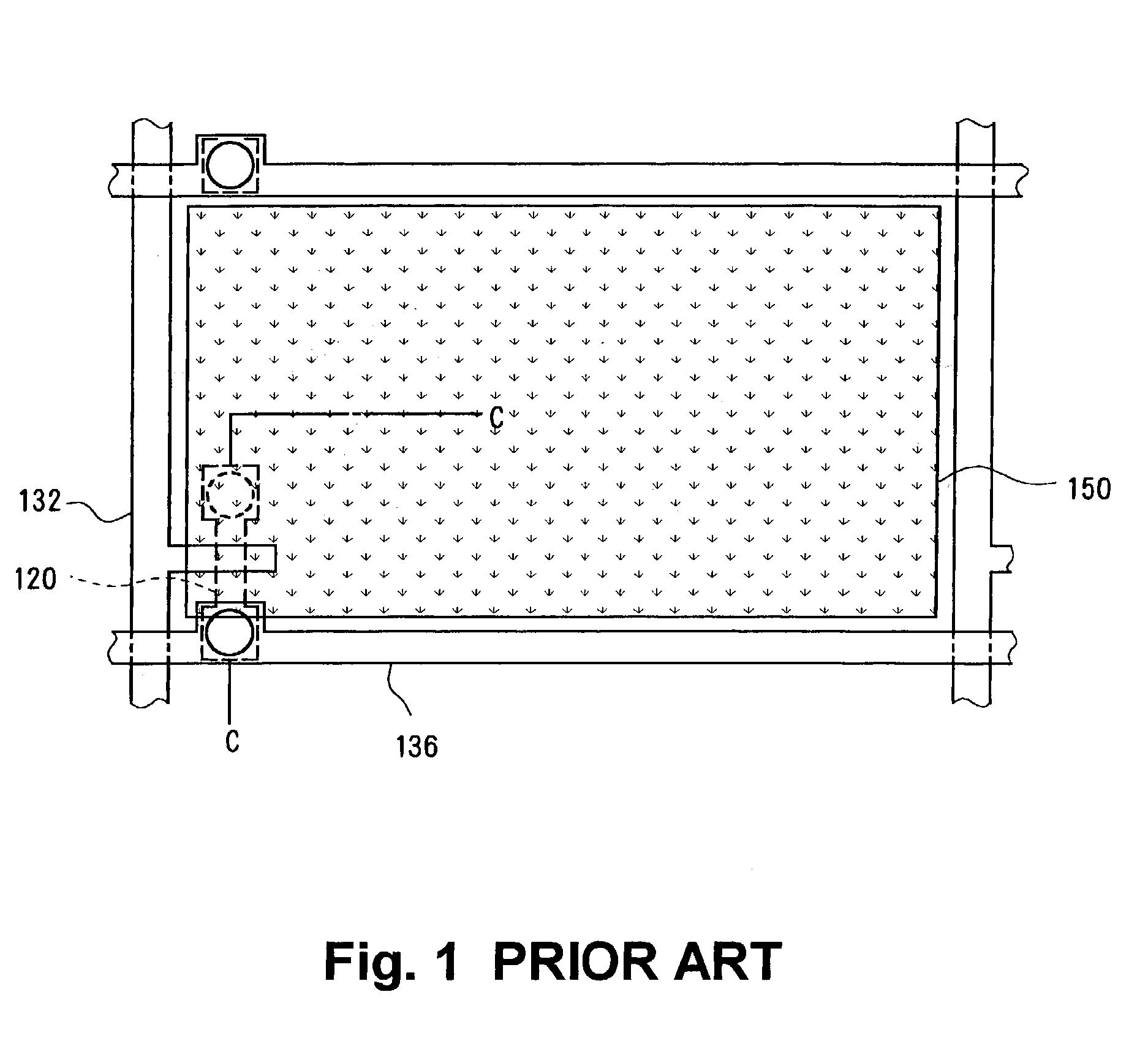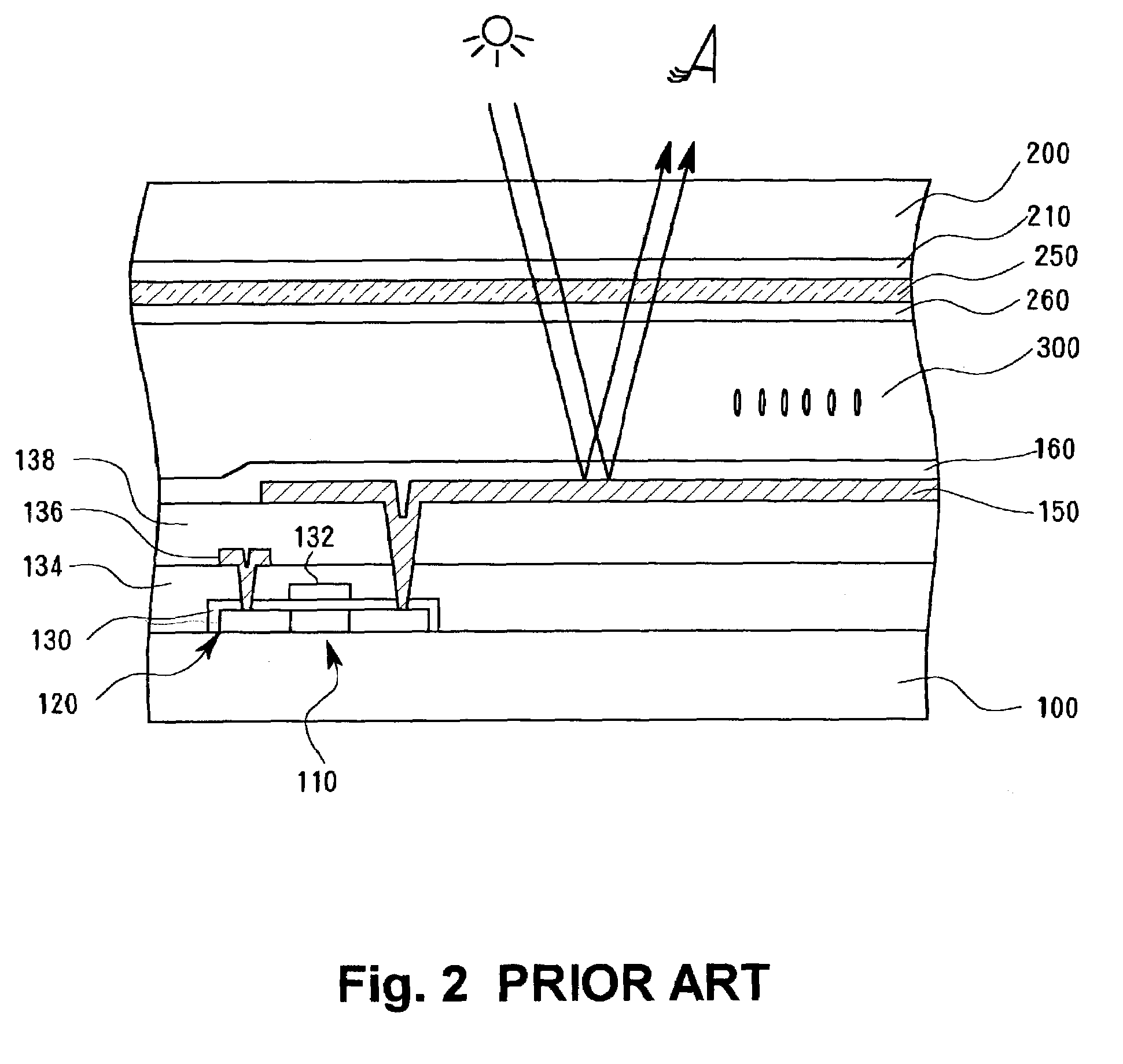Liquid crystal display apparatus having a transparent layer covering a reflective layer
a liquid crystal display and transparent layer technology, applied in non-linear optics, instruments, optics, etc., can solve the problems of insufficient contrast, inability to ensure and typical display quality such as color reproducibility and display brightness inferior to that of transmissive lcds, so as to prevent light coloring and improve display quality
- Summary
- Abstract
- Description
- Claims
- Application Information
AI Technical Summary
Benefits of technology
Problems solved by technology
Method used
Image
Examples
first embodiment
[0088]As described, even when a reflective layer must be formed on one of the substrate sides such as in reflective LCDs and in transflective LCDs, a first electrode and a second electrode having similar characteristics can be disposed in equivalent positions with respect to the liquid crystal layer. By setting the thickness of the transparent first electrode to 100 Å or less or approximately 750 Å to 1250 Å, it is possible to prevent coloring and reduction in reflectance caused by the first electrode disposed in front of the reflective layer. In addition, by increasing the thickness within the range described above, it is possible to reduce the resistance of the first electrode and prevent disconnection. Therefore, it is possible to symmetrically AC drive the liquid crystal and, at the same time, a high quality display can be realized.
[0089]Referring to the drawings, a second preferred embodiment of the present invention will now be described in which a transparent electrode 50 is...
second embodiment
[0090]FIG. 10 shows a portion of a planar structure of a first substrate side of a reflective active matrix LCD as an example reflective LCD according to the FIG. 11 schematically shows a cross sectional structure of the LCD along the line A—A of FIG. 10. In these drawings, components already described above will be assigned the same reference numerals and will not be further described. A difference from the structure described above is that a reflective electrode 44 made of a reflective metal material and respectively formed on a planarization insulating film 38 is connected to a TFT 110 (in this example structure, a source electrode of the TFT 110) and a transparent first electrode 50 made of a transparent conductive material is formed in an individual pattern above the reflective electrode 44 with an insulating film 46 between the electrodes 44 and 50.
[0091]When a gate signal (scan signal) is applied to agate electrode 32 of the TFT 110, the TFT 110 is switched on, causing, for ...
PUM
| Property | Measurement | Unit |
|---|---|---|
| drive frequency | aaaaa | aaaaa |
| driving frequency | aaaaa | aaaaa |
| work function | aaaaa | aaaaa |
Abstract
Description
Claims
Application Information
 Login to View More
Login to View More - R&D
- Intellectual Property
- Life Sciences
- Materials
- Tech Scout
- Unparalleled Data Quality
- Higher Quality Content
- 60% Fewer Hallucinations
Browse by: Latest US Patents, China's latest patents, Technical Efficacy Thesaurus, Application Domain, Technology Topic, Popular Technical Reports.
© 2025 PatSnap. All rights reserved.Legal|Privacy policy|Modern Slavery Act Transparency Statement|Sitemap|About US| Contact US: help@patsnap.com



